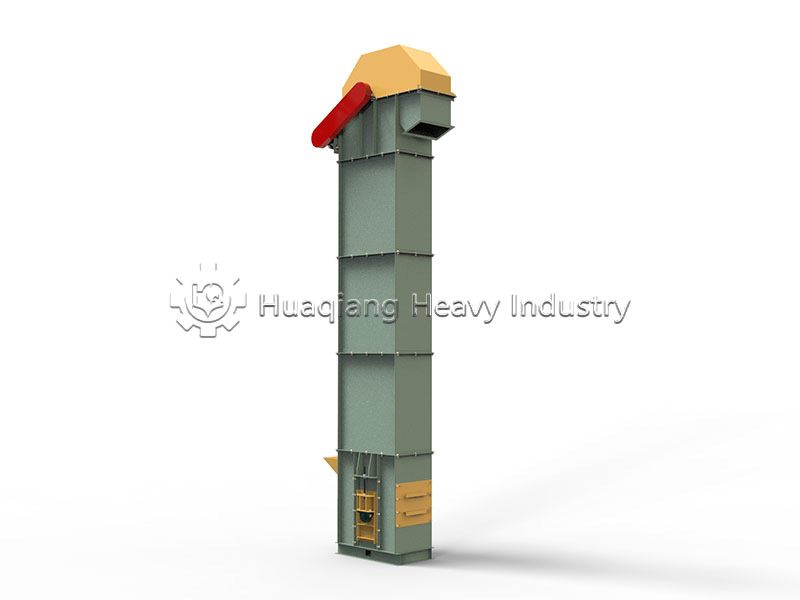In modern fertilizer production lines, bucket elevators serve as core equipment in material handling systems, undertaking the important task of connecting various production processes. Their efficient vertical conveying capability and stable operational performance provide strong support for the continuity and automation of fertilizer production.
Core Functions and Application Value
The main function of bucket elevators is to achieve vertical or steep-angle conveying of fertilizer raw materials and finished products. In compound fertilizer production lines, they can lift crushed raw materials to mixing equipment, then transport the uniformly mixed materials to granulation systems. In organic fertilizer production, bucket elevators are responsible for transferring fermented materials to drying and packaging processes.
Compared to traditional inclined conveyor belts, bucket elevators offer significant space advantages. Their vertical design greatly reduces equipment footprint, which is particularly important for production enterprises with limited factory space. Meanwhile, the enclosed casing structure effectively prevents the diffusion of fertilizer dust, reducing material loss while meeting environmental requirements of modern production.

Key Factors in Equipment Selection
When selecting bucket elevators, the physical characteristics of fertilizers must be fully considered. For granular compound fertilizers, deep bucket designs are typically chosen to ensure larger loading capacity; while for powdered organic fertilizers, shallow buckets are more suitable to prevent material adhesion. Material selection is equally important – when handling corrosive NPK fertilizers, corrosion-resistant materials such as 304 stainless steel should be prioritized.
Matching conveying capacity is another key point in selection. The elevator’s processing capacity should be slightly greater than the production capacity of adjacent process equipment, typically designed at 1.2 times the production line’s maximum output. This design can effectively prevent material blockage or equipment idling, ensuring smooth production flow.
Operation Maintenance and Fault Prevention
Material blockage is one of the most common failures in bucket elevators. This is usually caused by excessive feeding speed or bucket wear. Installing feed flow control valves can effectively prevent such problems, while regular inspection of bucket welds and edge conditions are necessary maintenance measures.
Chain or belt deviation problems tend to occur after long-term operation. Monthly adjustment of tensioning devices is recommended, ensuring parallelism between guides and transmission components. For production lines handling corrosive fertilizers, besides selecting corrosion-resistant materials, quarterly anti-corrosion treatment of the casing interior should be performed.
Determining the lifting height requires comprehensive consideration of factory structure and equipment layout. Conventional equipment lifting heights range between 3-30 meters, with customization available for special circumstances. Proper installation height not only affects equipment efficiency but also relates to the rationality of the entire production line layout.
As key connecting equipment in fertilizer production lines, the selection and maintenance of bucket elevators directly impact production efficiency and product quality. Through scientific selection, standardized operation, and regular maintenance, the performance advantages of bucket elevators can be fully utilized, providing reliable assurance for the stable operation of fertilizer production.
In conclusion, bucket elevators serve as the vital circulatory system connecting various stages of modern fertilizer production. Their reliable vertical transport ensures seamless material flow between different processes, whether feeding raw materials to an npk blending machine or supplying mixed powders to a disc granulator machine. In a comprehensive npk fertilizer production line, the elevator efficiently links pre-blending with the disc granulation production line, while in an organic fertilizer production line, it connects the windrow machine output to subsequent fertilizer granulation processes. The versatility of these conveying systems allows them to serve equally well in a bio organic fertilizer production line, transporting materials to specialized fertilizer granulator equipment like the double roller press granulator. By ensuring continuous material handling across the entire npk fertilizer line, bucket elevators ultimately enhance the efficiency, automation, and reliability of modern fertilizer manufacturing, proving themselves indispensable components in sustainable agricultural production systems.